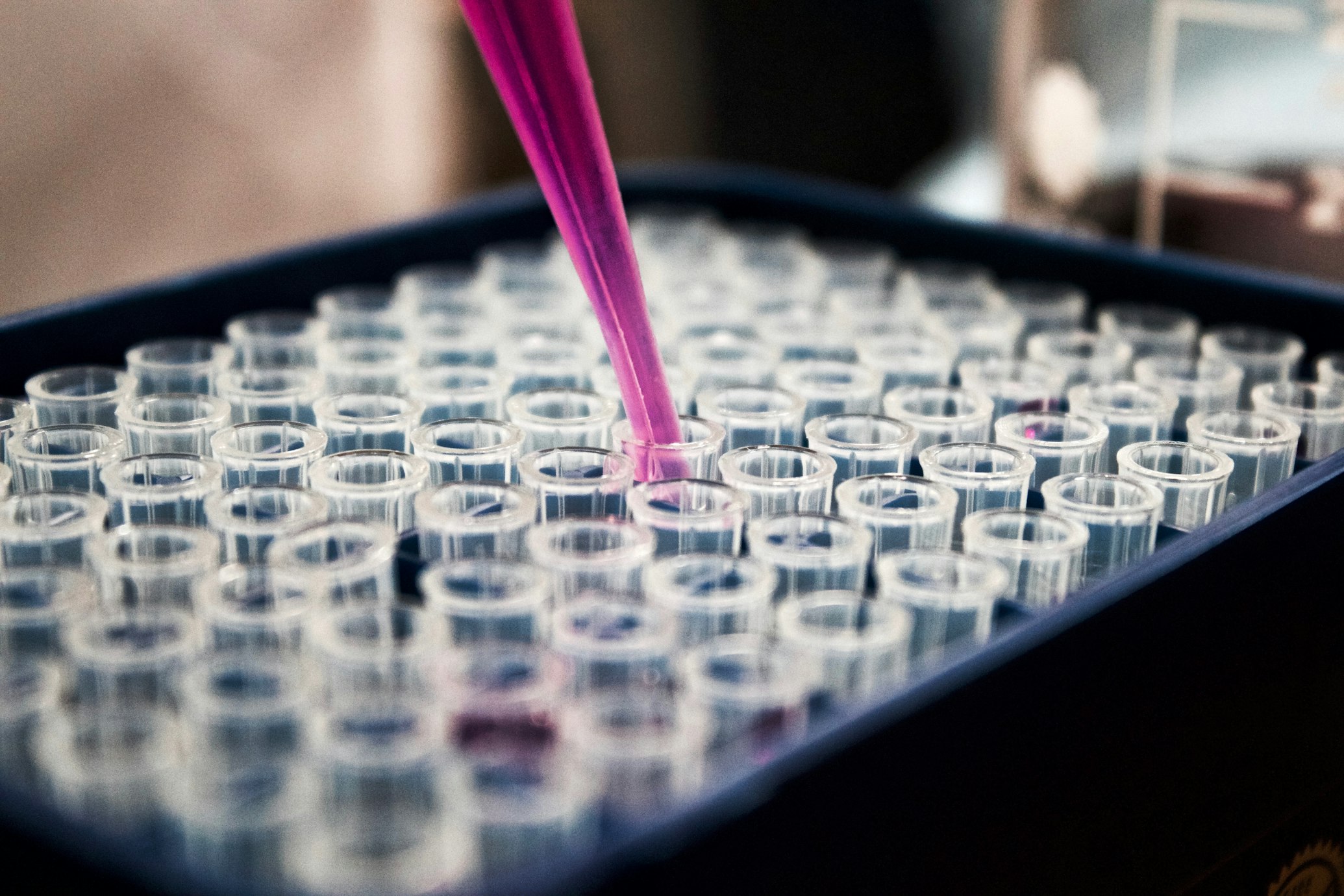Liquid Lightning
The High-Pressure Magic Forging Tomorrow's Nanomaterials
Introduction

Imagine crafting materials atom-by-atom, building structures thousands of times thinner than a human hair, with properties that defy conventional physics.
This isn't science fiction; it's the reality of nanotechnology. But how do scientists consistently create these tiny powerhouses? Enter the high-pressure, high-temperature world of Continuous Hydrothermal/Solvothermal Synthesis (cHTS) – a revolutionary chemical forge operating deep within the heart of specialized reactors.
Unlike traditional "batch" methods where reactions happen in a single, sealed container, cHTS is a dynamic, flowing process. It superheats water or organic solvents under immense pressure, creating a unique, supercritical environment that acts like a molecular sculptor.
This continuous flow allows for unprecedented control, speed, and scalability in producing nanomaterials – the building blocks of advanced electronics, targeted drug delivery, ultra-efficient catalysts, and next-generation energy solutions. It's chemistry at the edge, pushing fluids beyond their boiling points to unlock the potential of the infinitesimally small.
The Crucible: Supercritical Fluids & Flow Chemistry
At the core of cHTS lies the supercritical fluid (SCF). When a liquid (like water or ethanol) is heated and pressurized beyond its critical point, it enters a state that's neither fully liquid nor gas. Supercritical water (scH₂O), for instance, above 374°C and 218 atmospheres, possesses remarkable properties:
- Extreme Solvent Power: It can dissolve substances like a liquid but diffuse through materials like a gas.
- Tunable Properties: Its density, viscosity, and dissolving power change dramatically with slight adjustments in temperature and pressure.
- Rapid Reaction Rates: The intense conditions accelerate chemical reactions immensely.
Continuous Flow Synthesis
In continuous flow synthesis, two high-pressure streams meet:
- Precursor Stream: Contains dissolved metal salts or other starting materials.
- Supercritical Solvent Stream: The intensely hot, pressurized water or organic solvent.
Benefits of Continuous Flow
- Uniform Conditions: Every particle experiences identical temperature, pressure, and mixing history.
- Precise Control: Particle size, shape, and composition can be finely tuned.
- Scalability: Production can be ramped up simply by running the reactor longer.
- Safety: Small reactor volumes minimize risks associated with high pressures and temperatures.

Schematic of a continuous hydrothermal synthesis reactor system
The Particle Precision Experiment: Crafting Zinc Oxide Nanorods
A landmark experiment demonstrating the power and control of cHTS involved synthesizing zinc oxide (ZnO) nanorods, crucial components in sensors, solar cells, and LEDs.
Methodology: Step-by-Step in the Flow
Precursor Preparation
A solution of zinc nitrate hexahydrate (Zn(NO₃)₂·6H₂O) dissolved in deionized water is prepared.
Supercritical Water Generation
Deionized water is pumped at high pressure (> 240 bar), pre-heated, and then passed through a furnace zone to reach supercritical conditions (e.g., 400°C).
High-Pressure Mixing
The cold zinc nitrate solution stream (e.g., 25°C) and the supercritical water stream are rapidly mixed using a specialized T-junction or confined jet mixer inside the reactor core.
Reaction & Nucleation
Instantaneous mixing causes supersaturation, triggering the rapid nucleation and growth of ZnO particles. The high temperature and pressure favor anisotropic growth into rod-like structures.
Quenching & Collection
The reaction mixture flows out of the hot zone through a cooling coil, rapidly quenching particle growth. The resulting suspension of ZnO nanorods is collected at the outlet via a pressure-reducing valve.
Analysis
The collected nanoparticles are washed, dried, and analyzed using techniques like X-ray Diffraction (XRD) for crystal structure, Scanning Electron Microscopy (SEM) for size and shape, and UV-Vis spectroscopy for optical properties.
Results and Analysis: Dialing in Dimensions
The experiment revealed exceptional control over the ZnO nanorods by manipulating reactor conditions:
Temperature's Impact on Nanorod Size
| Reactor Temperature (°C) | Average Length (nm) | Average Diameter (nm) | Aspect Ratio (L/D) |
|---|---|---|---|
| 350 | 120 ± 20 | 25 ± 5 | 4.8 |
| 400 | 180 ± 30 | 30 ± 5 | 6.0 |
| 450 | 220 ± 40 | 35 ± 6 | 6.3 |
Analysis: Higher temperatures significantly increase nanorod length and diameter. This is due to faster reaction kinetics and reduced viscosity of scH₂O, allowing for greater diffusion of reactants and enhanced crystal growth along specific axes. The aspect ratio also increases, showing preferential growth.
Pressure's Role in Crystallinity & Morphology
| Pressure (bar) | Crystallite Size (XRD, nm) | Morphology (SEM) | Notes |
|---|---|---|---|
| 220 | 25 | Short rods, some spheres | Near critical point |
| 250 | 35 | Uniform rods | Well-defined scH₂O |
| 300 | 40 | Longer rods, slight aggregation | Higher density solvent |
Analysis: Optimal pressure (here ~250 bar) ensures stable supercritical conditions, leading to the highest crystallinity and most uniform rod morphology. Too low pressure risks phase separation; too high pressure increases solvent density, potentially hindering diffusion or promoting slight aggregation.
Precursor Concentration Dictates Yield & Size Distribution
| [Zn] (mol/L) | Product Yield (g/h) | Average Length (nm) | Size Distribution (PDI*) |
|---|---|---|---|
| 0.05 | 0.8 | 150 ± 40 | 0.25 (Broad) |
| 0.10 | 1.9 | 180 ± 30 | 0.18 (Narrower) |
| 0.20 | 3.5 | 210 ± 50 | 0.22 (Broad) |
*PDI: Polydispersity Index (lower = more uniform size)
Analysis: Higher precursor concentrations increase production yield. However, an optimal concentration (0.10 M) yields the narrowest size distribution. Very low concentrations produce fewer nuclei, leading to larger but less uniform particles. Very high concentrations cause rapid, uncontrolled nucleation, resulting in broader size distributions and potential aggregation.
This experiment showcased cHTS's power: precise tuning of nanorod dimensions (length, diameter, aspect ratio), crystallinity, and uniformity simply by adjusting knobs on the reactor – temperature, pressure, and concentration. This level of control is vital for tailoring nanomaterials to specific applications .
The Scientist's Toolkit: Essentials for the Nano-Forge
Creating nanomaterials via cHTS requires specialized equipment and reagents. Here's a breakdown of key components:
| Research Reagent/Material | Function in cHTS Experiment | Example (e.g., ZnO Synthesis) |
|---|---|---|
| High-Pressure Pumps | Deliver precursor and solvent streams at constant, high pressure against reactor backpressure. Precision is critical. | HPLC pumps or syringe pumps |
| Precursor Salts | Source of the metal ions or elements forming the nanoparticle core. Must be soluble. | Zn(NO₃)₂·6H₂O, TiCl₄, Ce(NO₃)₃ |
| Solvent | The medium heated to supercritical state. Dictates reaction environment & solubility. | Deionized H₂O, Ethanol, Isopropanol |
| Reactor Core | Where mixing and reaction occur. Designed for rapid mixing, high T/P resistance, and short residence times. | Swagelok T-piece, Confined Jet Mixer |
| Heating System | Heats the solvent stream to supercritical temperatures (>374°C for H₂O). | Tubular furnace, heating tape |
| Pressure Vessel/Tubing | Contains the high-pressure, high-temperature fluids. Must be corrosion-resistant. | Inconel, Hastelloy, Sapphire tubes |
| Pressure Control | Maintains system pressure above critical point and safely releases product. | Back-pressure regulator (BPR) |
| Quenching System | Rapidly cools the product stream to halt particle growth. | Cooling coil, cold water bath |
| Collection System | Safely collects the nanoparticle suspension after pressure reduction. | Vessel with filter or centrifuge |

High-Precision Equipment
The success of cHTS relies on precise control systems capable of maintaining extreme conditions consistently throughout the synthesis process.

Material Characterization
Advanced analytical techniques are essential for verifying nanoparticle size, shape, crystallinity, and composition after synthesis .
Conclusion: Flowing Towards a Nano-Enabled Future
Continuous Hydrothermal/Solvothermal Synthesis is more than just a chemical process; it's a paradigm shift in nanomaterial manufacturing.
By harnessing the unique power of supercritical fluids in a dynamic flow system, scientists gain an unprecedented level of control over the size, shape, structure, and composition of nanoparticles. The precision demonstrated in experiments like the ZnO nanorod synthesis unlocks the ability to design materials with properties tailored for specific, high-impact applications – from more efficient solar panels and longer-lasting batteries to targeted cancer therapies and ultra-sensitive environmental sensors.
As reactor designs advance and our understanding of supercritical chemistry deepens, cHTS promises to move nanomaterials out of specialized labs and into large-scale industrial production.
This "liquid lightning" process, operating under extreme conditions, is quietly forging the building blocks of a smarter, cleaner, and more technologically advanced future, one precisely crafted nanoparticle at a time. The age of continuous nano-creation has begun.
